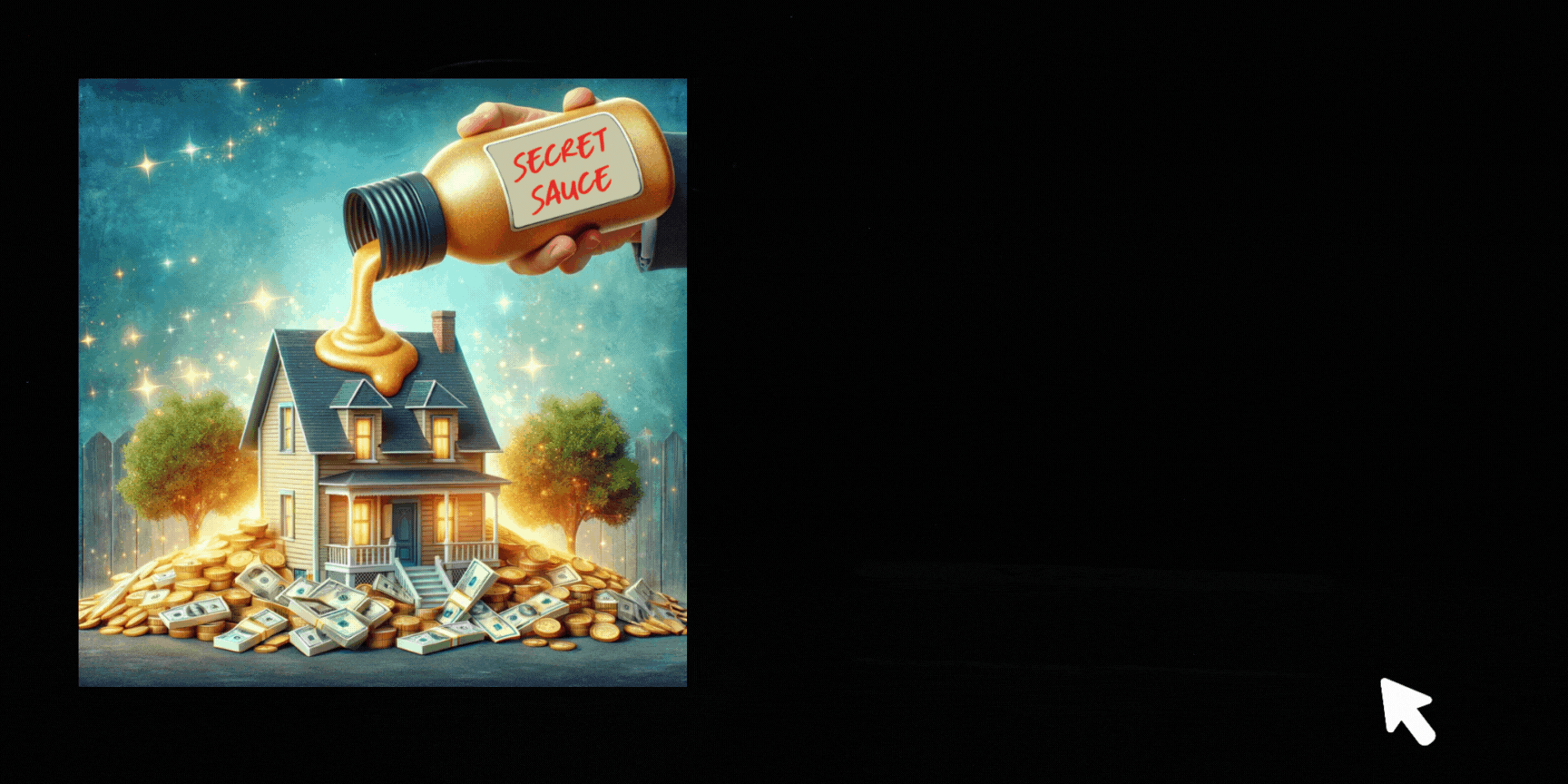Selling a home can feel like an emotional rollercoaster – especially when your property has sat on the market for three months with no sale. As a seller, you might be frustrated and wondering what else can be done aside from slashing the price to spark buyer interest. The good news is there are powerful strategies to get your property under contract quickly without immediately resorting to a price reduction.
This comprehensive guide (in plain English, not REALTOR® jargon) will walk you through actionable steps to breathe new life into your listing. I’ll cover how to optimize your home’s presentation, supercharge the marketing (both online and offline), leverage psychology to create buyer urgency, and even offer creative incentives – all tailored to different property types and locales. By the end, you’ll have a game plan to attract more buyers and get that “sold” sign up, while maintaining your asking price and your sanity.
Reevaluate and Refresh Your Home’s Presentation
The first place to start is with an honest, critical look at how your home is being presented to buyers. If your photography, description, or showing condition aren’t absolutely top-notch, you could be turning off potential buyers before they ever set foot in the door. Let’s break down how to make your listing shine:
High-Impact Photography
In today’s digital market, photos are your home’s first impression. Ask yourself: are the listing photos truly the best they can be? Professional, high-quality images are a must. If you already invested in pro photos, consider taking them up a notch with variety and creativity. Can you add a twilight shot of the exterior with warm lighting, an aerial drone photo capturing the whole property, or seasonal images that show the home at its best? According to a leading real estate marketing expert, there is “nothing more important than awesome photos” in attracting buyers – even if it means ordering twilight or drone photos after the fact, do it. These visually appealing shots can stop scrolling buyers in their tracks and entice them to read more.
Twilight photography can transform a listing’s appeal. In this image, the sky and interior lights are enhanced to create an inviting, emotional ambiance. Such professional techniques have been shown to attract more online views and lead to faster sales .
However, I want to make sure you know that more is not always better. For each and every picture on your real estate listing, I suggest you ask: is there anything that a buyer would object to in this? Is there anything a buyer might see in the photography that would make them not want to come and see the home? Sellers need to understand that buyers are just as likely to use the photos they see online as a reason to skip seeing your house even more than they use the photos as a reason to come and see it in person. So be very careful when choosing your photos and only pick the ones that create curiosity in the buyers to make them come and see it in person.
Virtual Tours and Video
Beyond still photos, today’s buyers love interactive and multimedia experiences. If you haven’t already, create a virtual 3D home tour or an engaging video walkthrough. Many buyers now expect to be able to tour a home virtually – in fact, nearly half of real estate buyers’ agents say that including video tours in listings is “highly important” to their clients. A simple video (even shot on a new smartphone by your agent) highlighting the flow of the home or drone footage of the surrounding land can make your property stand out online. Especially for out-of-town or busy buyers, virtual tours allow them to explore your home at any hour, increasing the chances of attracting a serious inquiry. The more time a buyer spends engaging with your listing online, the more likely they are to schedule an in-person showing.
Compelling Listing Description
Take a fresh look at the words used to describe your property on the MLS and websites. Is the description just a bland list of features (“3 bed, 2 bath, nice kitchen” etc.), or does it paint a picture of what it’s like to live in the home? A well-written narrative can inspire an emotional connection. Experts advise telling a story in your listing remarks – convey the lifestyle and unique features, not just the stats. For example, instead of “Spacious living room with fireplace,” try something like: “Cozy up by the crackling fireplace in a spacious living room, with picture windows framing wooded mountain sunsets.”
The goal is to help buyers imagine themselves in the home. Research shows certain words can even influence how quickly a home sells. A CoreLogic study of over a million listings found that terms highlighting desirable features – like “open concept,” “natural light,” or “updated kitchen” – tended to correlate with faster sales, while empty hype words or “desperation” phrases (like “must sell” or “priced to sell”) can backfire. Make sure your description showcases any recent improvements (new appliances, fresh paint, etc.) and community highlights (near a beloved trail, walkable to a great café, etc.). And double-check you’re not inadvertently sending the wrong signal; phrases like “motivated seller” or “good value” might seem helpful, but studies have found they actually prolong time on market and invite lowball offers by hinting at seller desperation. Keep the tone confident and inviting. If writing isn’t your strong suit, ask your agent for help or hire a professional real estate copywriter – it can make a real difference.
Maximize Curb Appeal
Now, let’s talk about what buyers see when they pull up to the curb or first click on that lead photo. Human beings form snap judgments extremely quickly – one study found that property buyers make up their mind about a house within the first 7–10 seconds of seeing it. First impressions begin with the exterior: the curb appeal and entryway set the emotional tone for the entire showing. Take a walk outside and view your home as if through a buyer’s eyes. Is the landscaping neat and attractive? Is the front door clean, painted, and welcoming? Are there any eyesores like peeling paint, overgrown shrubs, or a cracked walkway that you’ve gotten used to but a newcomer would spot immediately? Address those now.
Simple upgrades like fresh mulch, trimmed hedges, potted flowers by the door, or painting an old front door can pay huge dividends in buyer perception. In fact, research shows that curb appeal directly impacts value – homes with strong curb appeal can boost a property’s value by up to 7% or more, and conversely, neglected landscaping can drag down value significantly.
One study by Trees.com (cited by the National Association of Realtors) revealed that poor landscaping alone can decrease a home’s value by as much as 30% in the eyes of buyers. That’s an extreme case, but it underlines how crucial it is not to let the outside slide. As one real estate professional put it, if buyers see a weed-filled yard or peeling exterior, they immediately suspect the home hasn’t been well-maintained, and they mentally lower their price offer before they even step inside. Don’t let that happen to you! Invest a little time or money in sprucing up the exterior – power-wash the siding, clean the windows, plant a tree or two, and make sure house numbers and mailbox look cared-for.
If your home is in a rural or woodland area (like say the Los Gatos Mountains), “curb appeal” might mean grading a gravel driveway or clearing brush to showcase the view. In suburban neighborhoods, it could be updating an outdated porch light and keeping the lawn immaculate. Urban properties might need a once-over of the facade or stoop. The bottom line: don’t skip the curb appeal, because every buyer starts there.
Interior Condition and Staging (Even If Occupied)
Once you get buyers through the door, keep the good impression going. I’m not a big fan of traditional staging because despite the anecdotes about the miracles of staging, actual third party research shows staging doesn’t increase the sale price or speed the sale. Instead, focus on what is achievable: a deep clean, decluttering, and small cosmetic updates. Remove excess personal items and furniture clutter to make rooms look as spacious as possible. A cluttered home – even if it’s lived-in – can prevent buyers from visualizing their own belongings and life there.
Give the home a thorough cleaning (or hire pros): shining windows, clean floors, and fresh air can subconsciously signal that the home is well cared for. Consider temporarily boxing up collections, family photos, or eccentric decor; creating a neutral canvas helps others project themselves into the space. If the decor or wall colors are very bold or taste-specific, a fresh coat of paint in a light, neutral tone can have a big impact on buyer appeal (plus neutral colors reflect light and make spaces feel larger).
Also pay attention to lighting – open all curtains and blinds for showings to let in natural light (buyers love brightness), and ensure every bulb is working and at a pleasant soft-white tone. These little tweaks play into buyer psychology: people feel happier and more at ease in well-lit, tidy spaces. In an occupied home, you might not have staged furniture, but you can rearrange or remove pieces to improve flow through the house. For example, if a room feels cramped, putting some items in storage during the selling period can open it up.
You can also add a few staging touches yourself – crisp new towels in bathrooms, a bowl of fresh lemons in the kitchen, or blooming flowers on the table. These signals make the home feel cared for and invite buyers to linger a bit longer during showings. The longer they stay, the more likely they are to start emotionally “moving in” in their mind.
Highlight What’s Been Done
Sometimes a home isn’t selling because buyers fear the unknown – what if there are hidden issues or necessary repairs? You can preempt those concerns by being proactive about maintenance and disclosures. Have you already made improvements or fixed problems during the listing period? Make sure those are highlighted in your marketing. For example, “New roof in 2023” or “new HVAC system in the last year” are gold nuggets to a cautious buyer scanning listings. Even mentioning smaller upgrades like a new water heater or updated appliances can set your home apart from a similar one down the street that hasn’t been updated. If there are known issues you can’t afford to fix ahead of time (say, an aging deck or an older furnace), consider getting quotes for the repair and have them ready – it shows you’ve done the homework and priced accordingly, and it helps buyers feel informed rather than surprised.
Consider a Pre-Listing Inspection
To really put buyers at ease (and distinguish your listing), you might take the extra step of getting a home inspection done yourself, upfront. Yes, inspections are traditionally the buyer’s responsibility after going under contract, but in the Bay Area, most sellers have been pre-inspecting their property for years. Why? Because one of the top reasons sales fall through is unexpected inspection issues. Nationwide, about 1 in 16 real estate contracts (roughly 6%) fall apart before closing, and in some recent markets that cancellation rate has spiked up to 15% – the highest on record – due largely to inspection surprises spooking buyers.
By doing an inspection before listing (and addressing the repairs or disclosing them transparently), you remove that element of surprise. It builds trust with buyers and can speed up the closing process. Simply put, “disclosure is confidence” – showing buyers a professional inspection report and what you’ve fixed gives them peace of mind that there won’t be nasty surprises lurking in the crawl space. Of course, buyers may still do their own inspection, but you’ll have already resolved many issues or priced the home with those issues in mind, greatly reducing the chance of last-minute cold feet and assures the buyer that there are no major issues with the home.
Amplify Your Marketing Exposure
If a home isn’t selling, one possible issue is that not enough of the right buyers are seeing it. Even the most beautiful listing won’t sell if it’s a well-kept secret. You mentioned the photos have been shuffled around online, but perhaps it’s time for a broader marketing push. This means casting a wider net and targeting the most likely buyers more effectively. Here’s how:
Leverage Online and Social Media Channels
The days of just sticking a sign in the yard and waiting are long gone. In 2025, you need to be actively promoting your listing across the digital landscape. Make sure your home is syndicated on all major real estate websites (Zillow, Realtor.com, Trulia, Redfin, etc.) – it likely is, if it’s on the MLS, but double-check. Next, work with your real estate agent on a robust social media marketing campaign. Why social? Because that’s where people’s attention is – nearly 9 in 10 real estate professionals use social media to sell homes, and for good reason. A recent National Association of Realtors survey found that 87% of agents use Facebook in their business and over half cite social media as their #1 source of high-quality leads.
By showcasing your property on platforms like Facebook, Instagram, and even LinkedIn, you tap into networks of people who might not be actively checking listing sites every day. Ask your agent to create a boosted Facebook post or Instagram ad featuring your home’s best photo and a catchy description – you can target these ads by geography, interests, and demographics. For instance, if you have a mountain home in the Santa Cruz Mountains, you might target people in the broader Bay Area who have shown interest in outdoor recreation or are searching for homes in scenic areas. The cost of social media advertising is relatively low, and even a few hundred dollars of targeted ads can put your home in front of thousands of potential buyers who otherwise might miss it.
Don’t underestimate local online groups either: community Facebook groups, Nextdoor, or local real estate forums can be great places to share your listing (as long as the group allows it – some have rules). The key is visibility – you want as many eyeballs on your listing as possible, because more views typically translate to more inquiries. In fact, industry data shows that a well-optimized online listing (with lots of photos, detailed info, and maybe a floor plan) not only draws more clicks but can lead to a quicker sale. The National Association of REALTOR®s notes that in the digital home search, buyers find photos to be the most useful feature (no surprise), followed by detailed property information – and importantly, about 31% of buyers said floor plans were very useful when shopping online. So, if you have a floor plan graphic or can get one made, include it in your online listing; it’s another way to engage serious buyers and set yourself apart (many listings still don’t include floor plans, so you can gain an edge there).
Tap Into Agent Networks
Sometimes the buyer for your home isn’t actively searching on their own – they might be someone working closely with a buyer’s agent who hasn’t spotted your listing yet. That’s why you should encourage your agent to market to other agents as much as to consumers – and this is where the Compass agent network excels. Agents have their own private networks and groups. For example, many cities and regions have agent-only Facebook groups or email lists where new listings and price improvements are shared. Your agent can post your property in those channels to reach buyer’s agents who might have a client for it.
A creative approach that Compass agents often use is doing a bit of “reverse prospecting” on the Compass platform to see which other agents in town have recently had buyers save or favorite similar properties, then personally reach out to those agents about your listing.
Additionally, consider a broker’s open house or special agent tour if you haven’t done one already. This is an open house specifically for real estate agents (often held on weekday mornings) where you might provide juice and treats to get the agents to swing by. It might sound gimmicky, but getting agents through the door is half the battle – once they’ve seen the home and it’s on their radar, they might match it to one of their buyers. At the very least, you’ll gather more feedback on why it hasn’t sold, and you expand the word-of-mouth exposure.
Old School Marketing Still Works
While digital is crucial, don’t ignore traditional methods – they can still yield results, particularly in certain locales. For example, is your for-sale sign highly visible from the road? If not, consider adding a second sign or a sign rider with a highlight (e.g., “New Price” or “Back on Market” if either is true, or even something like “View Sunset from Deck!” to pique curiosity). In a rural or mountainous area, you might have a long driveway or not much drive-by traffic; in that case, signage might not be as impactful. But in suburban neighborhoods or busy streets, a sign can catch the eye of passersby who didn’t see it online. Some sellers even hang a large banner or flag if the house is set back from the road – anything to make sure people know it’s for sale.
Also, think about print exposure: if your property is upscale or unique, sometimes local lifestyle magazines or blogs will feature interesting homes (“Home of the Week” style write-ups). It might be worth pitching your home’s story to a local reporter or real estate blogger. For instance, if your home has a fascinating history or a remarkable architectural style, that’s a human-interest angle that could get it some press and free publicity. The trick is to make your property newsworthy: think along the lines of “Local artist’s mountain retreat up for sale” or “Off-grid living in modern comfort – check out this unique home.” This won’t apply to every home, but it’s a creative avenue that can generate buzz if done right.
Neighborhood and Community Outreach
Sometimes the buyer is literally your neighbor – or their friend. Make sure the local community knows your house is on the market. Neighbors might have friends or family looking to move, and word of mouth is powerful. You (or your agent) can send a friendly email or postcard to the neighborhood announcing the listing and inviting everyone to a nearby open house. It’s not uncommon that someone a few streets over always loved your area and jumps at the chance to have a friend move in nearby.
Additionally, some agents host a “neighbors-only” open house preview right before a public open house – they’ll invite the surrounding streets to come have a sneak peek (often with refreshments). This can turn neighbors into an extension of your sales force; even if they’re just curious, they might mention the home to others. Plus, a busy open house full of people (even if some are neighbors looking around) creates a vibe of interest that can influence serious buyers who attend (more on that psychology in a moment).
Ensure 24/7 Availability
One often overlooked factor is how easy (or difficult) it is for buyers to schedule a showing of your home. At the three-month mark, you want zero friction in this process. Talk with your agent about making the property as accessible as possible. Can you allow short-notice showings? (Within reason, of course – an hour or two heads-up, if you can manage it, is great.) If your showing instructions have been restrictive (like “48-hour notice required” or very limited hours), try to loosen them. The easier it is for buyers to come see it, the more of them will come.
If you’ve already vacated, consider having your agent use a lockbox so other agents can show the home even on short notice or when your agent isn’t available – that’s standard practice in many areas. If you’re still living there, I know it’s a pain to keep the house “show-ready” at all times, but at this stage flexibility can make the difference. Many buyers, especially in a tight market, tour homes in the evenings or weekends. Be open to evening showings (with lights on, it can actually look very cozy at night). Also double-check that your online listings all have the correct contact info and that no inquiries are slipping through the cracks. Mystery shop your own listing: send a test inquiry through Zillow or Realtor.com and see how quickly (and who) responds. If leads were being routed to a wrong email or not answered promptly, that could be a fixable issue.
Consider a Temporary Off-Market Refresh
If your listing has been actively marketed for over a month, it may have what we call the “stale listing” syndrome – buyers see the days-on-market (DOM) counter climbing and assume something’s wrong or that you’re ripe for a low offer. One strategy (albeit one to use carefully) is to temporarily withdraw the listing from the market for a short breather, then relist it so it appears fresh to new eyes.
Rules vary by MLS, but the Silicon Valley MLS (mlslistings.com) will reset the DOM if a listing has been off for 30 days or so. Discuss this with your agent: you’d ideally use that off-market time to implement some of the improvements we’ve discussed – new photos, new description, maybe minor repairs – and then re-launch as a “new listing” with a bang. This essentially gives you a do-over in the market. Do note that savvy agents and buyers can often dig up a property’s listing history, so it’s not about tricking anyone, but the psychological impact of a relaunch with fresh marketing can’t be underestimated. It often comes with renewed interest, especially if you time it well (e.g., just as the spring buying season starts, or after the holidays). If you pursue this, make sure to blast the “new” listing out through all channels as if it were a brand new home for sale.
Create New Buyer Interest through Events and Urgency
When a property isn’t generating offers, sometimes you have to bring the mountain to Mohammed – in other words, create opportunities for buyers to come to you and feel a sense of urgency or excitement. Two excellent tools for this are open houses and special events.
Hold Strategic Open Houses
Open houses are an age-old tactic, but when used smartly they can inject life into a listing. Even if you’ve done one or two already, consider doing them regularly (say, every couple of weekends) with some variety in timing and format. Why? First, there’s convenience: some buyers, especially casual lookers or those early in their search, might not schedule a private showing but will pop into an open house if it’s easy. In fact, nearly a quarter of buyers consider open houses a very useful part of their home search process.
Every additional person who walks through is a potential offer (or they might tell a friend). Second, an open house can create a subtle sense of competition. When a prospective buyer sees other people milling about and admiring the home, it provides social proof that the home is desirable. Nobody wants to lose out on a great find. We’ve all heard of “fear of missing out” – it definitely applies in real estate. If a buyer sees several others at your open house, they may start to wonder if they should hurry to bid before someone else does; psychologists note that perceived high demand and scarcity can push buyers to act faster.
To maximize this effect, try to combine efforts for one big open house event: for example, coordinate with your agent to invite the neighbors (as mentioned), advertise it on social media (“Join us for an Open House Sunday 1-4 pm – refreshments served!”), and maybe partner with a local lender or business to co-host. Some agents do themed open houses – like a twilight open house where you host in the early evening with subtle music playing and maybe cafe lights hung on the deck to showcase an ambiance.
If your home has a stunning sunset view or a beautiful garden, a twilight open house (with a glass of cider or wine offered) can let buyers experience those magic moments that daytime showings miss. Another idea is a lunchtime open house targeting local workers (if near an urban center) – offer free pizza or snacks, and you might draw in folks who normally couldn’t attend on a weekend. The goal is to make your property the place to be, even briefly. Each open house is also an opportunity to gather feedback directly from visitors – listen for repeated objections (e.g., “We love it but wish it had a second bathroom”). You might not be able to change those things, but you’ll know what’s holding people back and could brainstorm creative solutions (like architectural plans for an easy extra bath to show buyers it’s feasible).
Host a Broker’s Open or Special Event
We touched on broker’s opens earlier – those are essentially open houses for real estate agents, usually on weekdays. If your agent hasn’t done one, it could be worthwhile. Provide some light refreshments (agents love free food!) and perhaps a prize drawing as an incentive. Even a $50 Amazon gift cad or a nice bottle of wine can encourage agents to swing by. The more agents who have seen the property firsthand, the better – they may remember it when their next client’s wish list matches your home.
Another angle: host a themed event at the home. For instance, if your property has a great entertaining space, you could do an evening “wine and cheese night” and invite both potential buyers and local REALTOR®s. Or if it’s a family home in a neighborhood, perhaps a daytime event with a food truck or ice cream for kids while parents tour the home. Yes, it’s a bit outside-the-box, but unique approaches can generate buzz (people share these experiences on social media, too – free publicity!). I’ve seen sellers hold charity fundraisers or art shows at high-end homes to draw in a crowd who then also see the home’s features. The scale of event should fit your comfort level and property type, but don’t be afraid to be creative. At minimum, a straightforward “Second Look Saturday” open house (inviting those who came before to return with their family/friends) can help convert maybes into offers.
Foster a Sense of Urgency
One reason buyers might be circling but not committing is a lack of urgency – especially if your local market has slowed and they feel no pressure to move fast. You and your agent can create a gentle sense of urgency through various tactics. One way to imply urgency is through your agent’s communication: ensure that when agents or buyers inquire, your agent conveys that there’s been good interest in the property – and that the seller is reviewing offers as presented and is eager to accept one, so the property could go under contract at any time.
If buyers see the value, sense that others do too, and know that the seller is eager to accept an offer, that will work together to get buyers to write up an offer. Buyers often take cues from others’ interest; if they feel a property is in demand, their natural competitive instincts kick in. This taps into that fear of missing out (FOMO) that is very real in real estate – hearing that other people might want the home often makes a buyer want it more. On the flip side, if they sense it’s been sitting with no interest, they’ll think they have all the time in the world or can negotiate hard. It’s a delicate balance, but skilled agents know how to strike the right tone to encourage action without misrepresenting the situation.
Offer Incentives Instead of Cutting the Price
When a home isn’t selling, the knee-jerk reaction is often “drop the price.” Price reductions can indeed trigger new interest (and in some cases may be necessary), but before you go there, consider a different approach: sweeten the deal with incentives while holding firm on price. In the current market, many sellers are choosing to offer concessions or bonuses to attract buyers rather than simply trimming the asking price. In fact, recent data shows nearly 44% of home sellers have given some form of concession to buyers in early 2025 – just shy of the all-time record. Sellers are recognizing that a small financial incentive might entice buyers who are on the fence, without devaluing the property itself. Here are some incentive ideas to consider:
Help with Closing Costs
One of the most common incentives is offering to pay a portion of the buyer’s closing costs. Buyers (especially first-timers) can be cash-strapped; after making a down payment, the extra few thousand in closing fees can sting. If you advertise “seller will credit $25,000 toward buyer’s closing costs,” you instantly make your home more financially appealing than a similar home where the buyer has to pay all their own fees. It’s a psychological win for buyers – they feel like they got a deal, and you haven’t technically lowered your price. It’s coming out of your net proceeds, yes, but often in a softer way than a straight price cut.
Real estate agents are noting that in today’s higher interest rate environment, many buyers are asking for help with costs and rate buydowns – for instance, you could offer a credit specifically to buy down their mortgage rate by a point, making their monthly payments lower. These tactics keep the official sale price higher (good for you and for neighborhood comps), while improving affordability for the buyer. After all, buyers do care about price, sure – but they also care about the monthly payment, and lowering that through a mortgage rate buydown may help put a deal together.
Home Warranty or Maintenance Credits
Offering a multi-year home warranty to the buyer is another relatively low-cost incentive that gives buyers peace of mind. For maybe $1500-$2000 or so, you provide them coverage on major appliances and systems in the house for a time – so if the water heater springs a leak or the HVAC breaks, the warranty helps cover it. This gesture can make a nervous buyer feel more comfortable proceeding, knowing they have a safety net. Similarly, if your home has an aging component (say the roof is older but not leaking), you could offer a specific credit or escrow holdback for future replacement: e.g., “Seller will credit $3,000 toward new roof.” Again, this addresses buyer concerns without slashing the price across the board.
Flexibility on Move-In Timing
Not all incentives are monetary; some are logistical. You could, for example, offer flexibility on the closing date to accommodate the buyer’s needs – either a very fast close if they want to move in quickly or a delayed closing/rent-back if they have a house to sell themselves. Making it easier for the buyer to line up their move can be a deciding factor. While this doesn’t change the sale price, it adds value to the deal in the buyer’s eyes.
Personal Property or Allowances
Look around – are there items you could include with the house to make it more turnkey? Maybe that hot tub in the backyard, or the high-end kitchen appliances which you were thinking of taking – consider including them. If a buyer is on the fence and now learns they’ll get your beautiful stainless fridge and that ride-on lawnmower in the shed, that might sway them (and it’s stuff you might not need to move anyway). In rural or mountain locales, offering equipment like a riding mower, log splitter, or even a stack of firewood for the woodstove can feel like a bonus that helps a newcomer.
Buyer Agent Incentives
Another incentive strategy is to make sure buyers know that you as the seller are willing to pay the buyer’s agent commission. While ethically the home should sell on its own merits, the reality is that agents are human too – and making it clear to agents that they will absolutely get paid if they bring an acceptable offer can’t hurt. It’s a way of motivating those agents to show your property to their buyers. This tactic costs you money at closing, but again, it’s not a public price drop, it’s more of a marketing expense (and it does count as a cost of sale, which should lower any capital gains tax you may owe).
Tailor Tactics to Your Property’s Locale
Every home is unique, and so is every market. While the advice above is broadly applicable, it’s worth considering some location-specific strategies. A condominium in a downtown high-rise, for example, will require a different marketing spin than a rural cabin in the woods. Let’s touch on a few locale-tailored ideas:
In Urban Areas
If your property is in a city or densely populated area, you’re likely competing with many other listings (and buyers have plenty of options). Here, the key is to stand out and sell the lifestyle. Urban buyers often prioritize convenience and vibrancy. Emphasize features like walkability, access to transit, proximity to restaurants, parks, cultural venues, etc., in your marketing. Make sure your listing is posted on city-specific channels – e.g., a young professional might look on Craigslist or condo forums in addition to Zillow.
High-quality visuals are a must (city buyers are used to slick presentations). If the unit isn’t staging-friendly (occupied or small), consider virtual staging for the listing photos – digitally adding modern furniture to vacant rooms, for instance, so online viewers see the potential. Also, highlight any practical advantages your property has over others: does it include a rare parking spot? Extra storage? In-unit laundry when most nearby condos use shared laundry? These are big deals in city living and should be boldly advertised.
When doing open houses in urban settings, coordinate with building management if needed and maybe have a lender on hand who knows the building (for condos) to pre-qualify interested folks on the spot. Lastly, tap into FOMO by mentioning if similar units in the area have sold quickly or if inventory is low: e.g., “Only unit for sale in this building!” or “Rare find in [Hot Neighborhood].” Urban buyers are very attuned to trends and competition.
In Suburban Areas
Suburban buyers are often families or individuals looking for space, community, and comfort. Here you’ll want to market the community as much as the house. Make sure your listing mentions desirable local features: the great school district, the community pool or playground, nearby shopping and medical facilities, etc.
Since many suburban buyers move within the same metro area, think about advertising through targeted mailers or local family-oriented publications. For example, an attractive postcard about your listing sent to renters in a nearby apartment complex might entice some first-time buyers who hadn’t considered that neighborhood. Also, consider timing open houses around community events – if there’s a big farmers’ market or festival on Saturdays, maybe hold your open right after, and mention “Stop by after the farmers’ market!” in ads.
Suburban house hunters also appreciate practical info: have your agent prepare a one-page sheet at showings with utility cost averages, any homeowners association details, and notes on recent upgrades (so they know the furnace isn’t 20 years old, etc.). In a way, you’re addressing all the little questions that might give them pause, so they have fewer reasons to hesitate.
In Rural or Unique Locations
Selling a home in a rural area or a niche market (mountain properties, farms, remote locations) can be challenging because the buyer pool is smaller and often located farther away. Here, broadening your marketing radius is key. You want to reach city buyers or out-of-town buyers who might be dreaming of a rural retreat or a change of lifestyle. Online, ensure your listing is on specialty sites if relevant – for instance, if it’s a horse property, list on equestrian property websites; if it’s a mountain cabin, maybe an Airbnb investor forum might be a place to mention it as a potential vacation rental opportunity. Invest heavily in visual storytelling: use drone footage to show the land, nearby forests or lakes, etc., and maybe create a short video tour that highlights the tranquility and beauty of the location (you can share this on YouTube and social media – “escape to the Santa Cruz Mountains!”).
Because rural buyers often come from urban areas, consider occasionally advertising in the nearest big-city market. For example, a targeted ad or even a weekend open house in the city (yes, some agents will host a mini-open house in their downtown office with a slideshow and refreshments, essentially bringing the rural listing to city buyers for convenience). Another tactic: local tourism boards or relocation services might have channels to promote properties. Sometimes small-town newspapers or regional magazines have “real estate showcase” sections that city folk read when imagining a getaway. If your property could be a second home or vacation home, angle some marketing that way as well.
No matter the locale, a powerful approach is to put yourself in the buyer’s shoes for that area. Ask: Where would I go or who would I talk to if I were looking for a home like this? Then make sure your home is visible in those places.
Final Thoughts: Stay Patient but Proactive
After implementing the strategies above, remember that selling a home is part art, part science, and part timing. You’re doing everything in your power to present the home in the best light, reach the right audience, and motivate a sale. These efforts can and do yield results – countless “stale” listings have been rejuvenated by a marketing refresh, a new approach, or a savvy incentive that gets buyers off the fence.
Equally important is to keep an open dialogue with your real estate agent throughout this process. Review feedback from every showing and open house. Are you noticing a pattern in what people dislike or hesitate about? Some things you can’t change (location, layout), but if the only complaint is something fixable (say, “the house feels dark”), that’s actionable (maybe add lamps, or trim the tree blocking light). Also, revisit the competitive landscape regularly – if a similar home down the street just sold or another one just listed, that intel is crucial.
Your agent can do an updated comparative market analysis (CMA) to see if price or market conditions have shifted in the last 90 days. While we’re focusing on tactics other than a price drop, it’s still wise to know where you stand on pricing. Sometimes the market does send a clear message that the price is above where it should be. If you’ve truly tried everything – stellar presentation, aggressive marketing, generous incentives – and buyers still aren’t biting, you and your agent may conclude a price adjustment is the last piece of the puzzle.
The goal of all the steps outlined here is to either find that right buyer at your current price, or diagnose what barriers remain. If the barrier is something you can’t change (like a location inconvenience) and buyers in your range aren’t willing to overlook it, pricing strategically is the lever that remains. Pricing is its own deep topic, but know that an overpriced home can end up costing you more in the long run as it sits. Often, pricing it right from the start is the best strategy; however, since you’re already on the market, our mission is to get you to that “just right” zone through other means first.
Above all, keep the faith. Real estate transactions can take time, but markets are dynamic. Seasons change, new buyers emerge, and your buyer might be one showing away. By taking the initiative to enhance your home’s appeal, broaden its exposure, and make the offer more attractive, you’re significantly increasing your odds of success. Many a frustrated seller has been one tweak or one week away from an offer – and then it all clicks. Stay proactive, keep communication open, and soon enough the right buyer will walk through the door and fall in love with your home.
In summary, don’t lose hope. You now have a toolkit of concrete steps to try aside from cutting the price: from sprucing up that all-important first impression (both online and in person), to doubling down on marketing channels (social media, agent networks, events), to leveraging psychology (urgency and buzz), to offering creative incentives that make buyers feel they’re getting a deal. Implement these with your agent’s help, and you’ll inject fresh energy into your listing. Your perfect buyer is out there – let’s go find them and show them why your property is the one they’ve been waiting for. Good luck, and here’s to seeing your home sold and you moving on to your next chapter soon!
Beautiful Homes for Sale in Los Gatos
2
3
4
5
6
7
8
9
10
11
12
13
14
15
16
17
18
19
20
21
22
23
24
25










